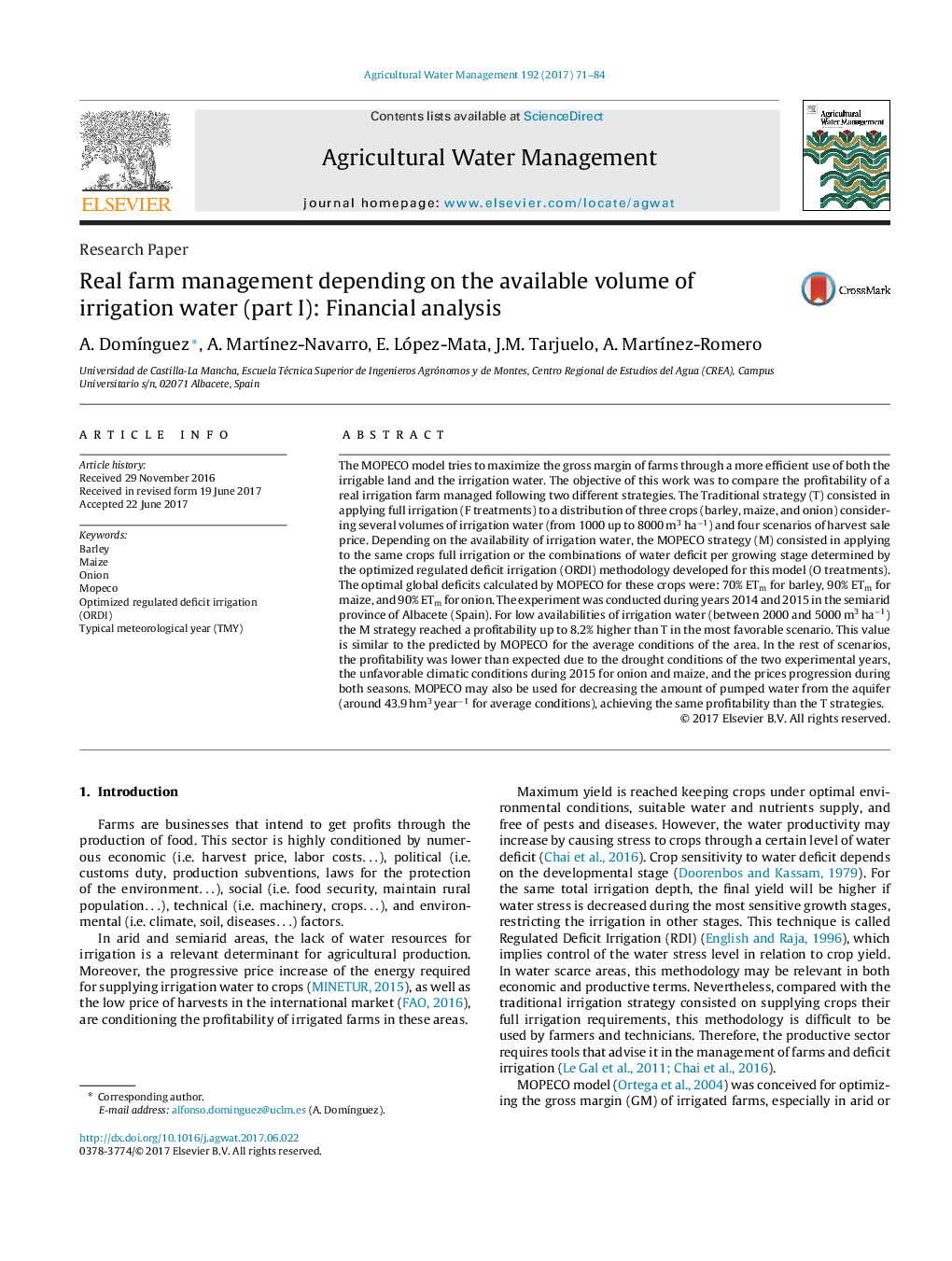| Article ID | Journal | Published Year | Pages | File Type |
|---|---|---|---|---|
| 5758418 | Agricultural Water Management | 2017 | 14 Pages |
Abstract
The MOPECO model tries to maximize the gross margin of farms through a more efficient use of both the irrigable land and the irrigation water. The objective of this work was to compare the profitability of a real irrigation farm managed following two different strategies. The Traditional strategy (T) consisted in applying full irrigation (F treatments) to a distribution of three crops (barley, maize, and onion) considering several volumes of irrigation water (from 1000 up to 8000Â m3Â haâ1) and four scenarios of harvest sale price. Depending on the availability of irrigation water, the MOPECO strategy (M) consisted in applying to the same crops full irrigation or the combinations of water deficit per growing stage determined by the optimized regulated deficit irrigation (ORDI) methodology developed for this model (O treatments). The optimal global deficits calculated by MOPECO for these crops were: 70% ETm for barley, 90% ETm for maize, and 90% ETm for onion. The experiment was conducted during years 2014 and 2015 in the semiarid province of Albacete (Spain). For low availabilities of irrigation water (between 2000 and 5000Â m3Â haâ1) the M strategy reached a profitability up to 8.2% higher than T in the most favorable scenario. This value is similar to the predicted by MOPECO for the average conditions of the area. In the rest of scenarios, the profitability was lower than expected due to the drought conditions of the two experimental years, the unfavorable climatic conditions during 2015 for onion and maize, and the prices progression during both seasons. MOPECO may also be used for decreasing the amount of pumped water from the aquifer (around 43.9Â hm3Â yearâ1 for average conditions), achieving the same profitability than the T strategies.
Related Topics
Life Sciences
Agricultural and Biological Sciences
Agronomy and Crop Science
Authors
A. DomÃnguez, A. MartÃnez-Navarro, E. López-Mata, J.M. Tarjuelo, A. MartÃnez-Romero,
